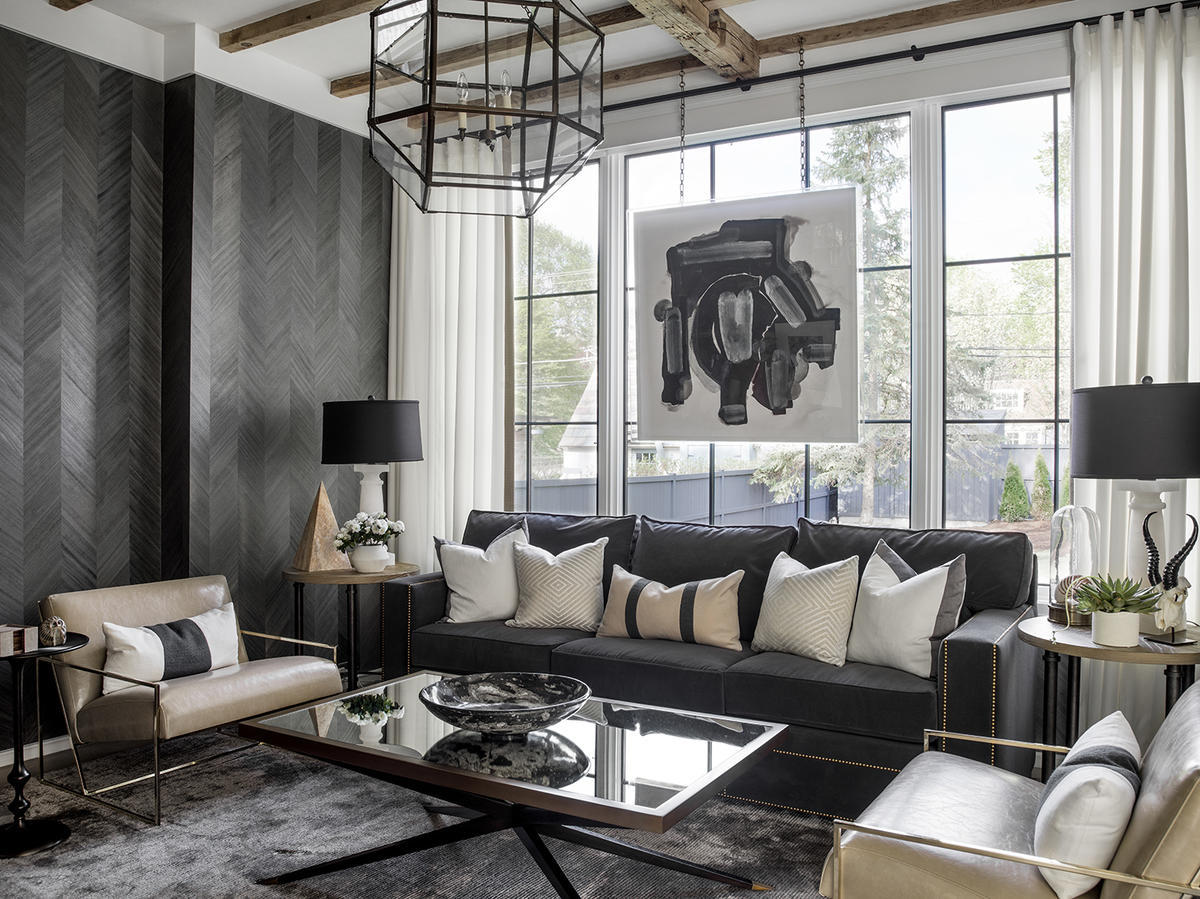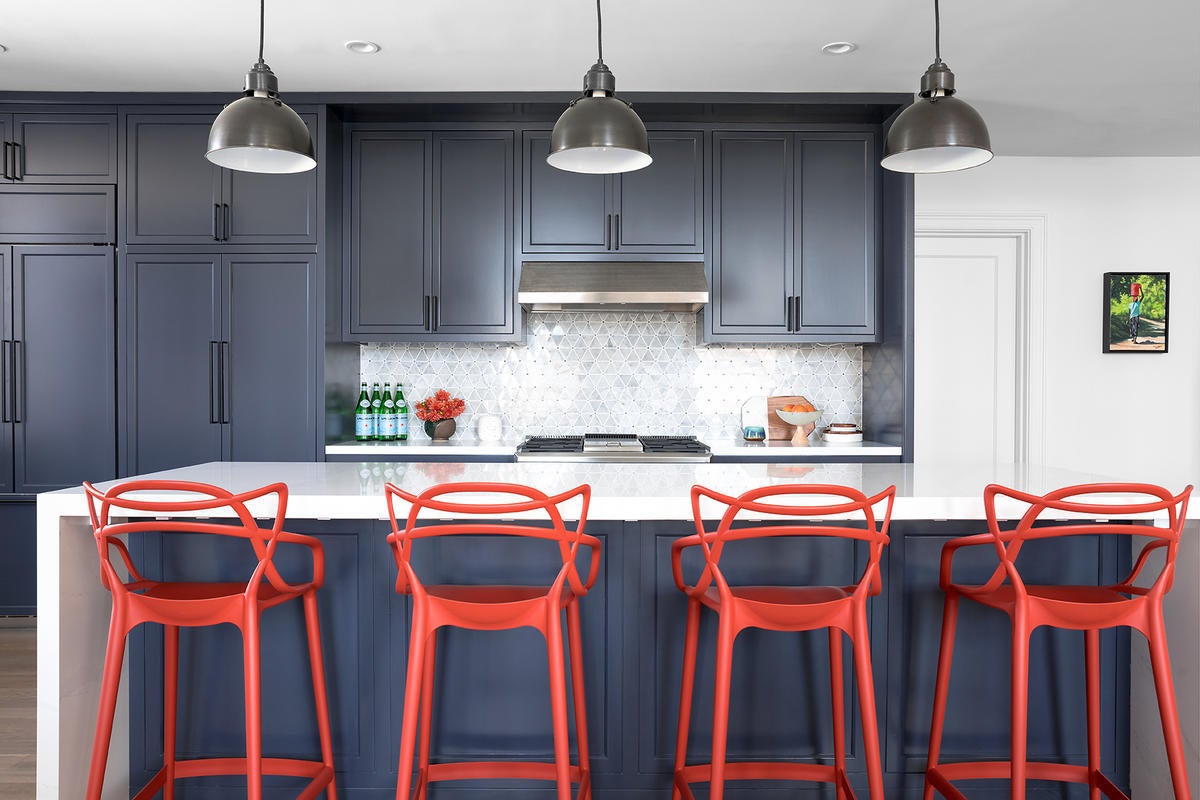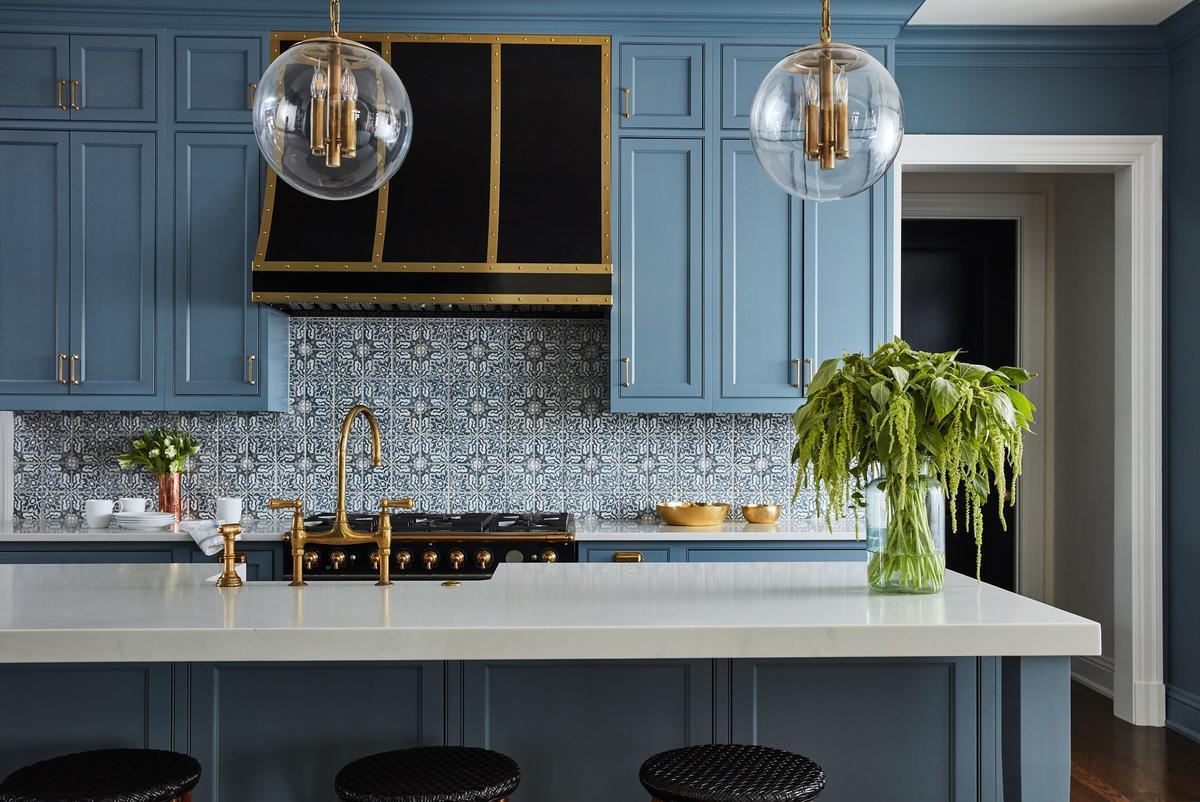Growth is a funny thing, and it has a way of sneaking up on us.
A case in point: When my younger brother was a preteen, he spent several months accidentally knocking items over throughout the house—a lamp here, a candy dish or candle there—as he adjusted to a sudden growth spurt and a newly elongated wingspan. “Look where you’re going!” my mom would shout as she heard something crash. But he was looking as he rounded the corner or flopped himself onto the couch. He just hadn’t quite adjusted to his longer limbs.
In weekly conversations with designers across the country for the 50 States Project this year, I kept circling back to that memory—an impulse inspired by the fact that many of the designers I talked to were going through a growth spurt of their own. No matter how they were growing, things would sometimes break along the way. Instead of lamps, it’s broken systems, stressed-out principals and overextended teams.
As bewilderment at the state of the industry turned to a realization that this design boom is here to stay for a while, navigating that growth became a hallmark of my conversations this year. There’s no one right way to do it, but the designers I spoke with had some great advice to help you on your way—and maybe avoid some of those broken lamps of your own.
SET THE STAGE FOR (SMART) GROWTH
Learn how to say no.
In a time of abundant work, it’s important not to get bogged down taking the jobs you don’t want, so you’ll have room for the ones that will help you grow. As her firm began to attract more inquiries, Oklahoma designer Sara Kate Little has gotten more confident passing on projects that don’t excite her. Often, the line in the sand is color—or rather, clients who don’t want any in their homes. “In the past year, we’ve had a handful of interviews with clients and their home is completely neutral and they would like it to stay that way, which is totally fine. But that’s not the work that I enjoy doing, and that’s not really what’s in our portfolio,” she told me. “In interviewing a client, if it’s clear from the beginning that you can’t meet expectations or you don’t align in terms of aesthetics or outlook, it’s definitely something you shouldn’t embark on.”
A minimum budget can bring clarity.
In Rhode Island, Janelle Blakely Photopoulos realized that her team of nine could be more profitable if she focused their efforts on the jobs that brought in more significant revenue. “That doesn’t mean they have to be crazy-big, high-end projects—it just means that we’re putting parameters around projects if they don’t even have a full room or two,” she explained. “For a long time, I felt like we had to service everyone, and that everyone deserves great design. What I found is that we were doing so many projects that we were running ragged, and it wasn’t really producing the type of revenue that we needed to sustain the firm. … Now, we’re actually putting in minimum investment—we’re not just talking about design fees at the very beginning, we’re saying, ‘If you want to engage with us, here is a minimum investment.’ It’s not a budget, it’s just a minimum, so it’s going to go up from here. But knowing that you’re going to invest this amount at a minimum sets the stage so that we know we’re not going below that level.”

Raise your rates. (You’re probably not charging enough!)
Inflation is here—maybe you’ve heard? As prices go up for, well, everything, designers may be wondering if their own rates should get a bump. If my conversations this year are any indication, the answer is a resounding yes. Rare is the designer who regrets it. In Louisiana, Whitney Jones discovered that charging more didn’t scare clients away—it attracted the kinds of clients who could truly afford the services she was most excited to deliver. “When I was charging $99 a room, clients didn’t expect anything from me. But when I started increasing my pricing, I noticed that people were treating me more like a professional,” she said. “[In the months] before I got my studio, I started having clients who assumed that I had an office, or assumed that I had an employee. These are clients that want me to be creative—that’s what they’re spending their money on.”
You may even want to rethink the way you charge.
As Tennessee designer Lori Paranjape started getting bigger jobs (and clients with higher expectations), she realized that her flat fee needed to keep up with the scope of work the firm was taking on. “I was … billing at milestones on a project, so we were doing just four invoices. Over the course of one project, we found that, because of delays that were no fault of our own, we only collected $40,000 for a year of work,” she recalled. “What we’re going to do now is monthly billing for the duration of what we think this project will be. So if we expect you to move in during the summer of 2024, we’ll bill you monthly until then, and it’s just a flat rate. If it goes past the summer of 2024, then the monthly billing continues until we are no longer touching that project.”
BUILD A TEAM THAT’S READY TO GROW
Start hiring.
North Carolina designer Cheryl Luckett made the leap from the corporate world to running her own firm—and quickly realized that she could only grow with another set of hands on board. “I think you get to a point where you realize you can’t do any more by yourself,” she told me. “I’m sure there are formulas you can plug in to see if you can afford it, but honestly, it’s a leap. It’s always a leap, and you just bet on the fact that with some extra people, you’ll be able to do more and make more money. To me, it’s that simple. You could analyze it to death, but at the end of the day, you still are one person with 24 hours.”
If paperwork is the bane of your existence, hire a business manager ...
Nine years ago, Alabama designer Betsy Brown made a crucial hire: someone to run her business while she focused on the design work. A surprising upside was that the change transformed more than just the firm’s bottom line. “It was shocking to me how organized she is, how productive she is, and how she can create an office environment that I’ve never been able to do—one where people have their heads down and are working hard, and then they stop all of a sudden when somebody tells a joke or a story about their life, and it’s like the sun comes out, and then we all go back to work,” she told me. In addition to a better company culture, the move allowed her to grow the business. “We started taking on more work, because I was able to increase my design work,” said Brown. “She was able to let me relax and concentrate on the thing that I’m good at.”
… or hire only high-level employees.
In Colorado, designer Jodi Cook hired two senior designers to take on their own projects—and then outsourced all of the purchasing, receiving and procurement instead of hiring junior staff. “I know a lot of my friends in the industry meet with every client and have people who work behind the scenes who may never even meet the clients. For me, that’s how you stay small,” she said. “I’m still copied on all of the emails going back and forth, so I know what’s going on, … but the day-to-day client meetings and presenting things falls to the seniors. We have touch points at each phase where I’m checking in—redlining drawings, looking at schematics. Good design doesn’t happen in a vacuum. [But] sometimes it’s just me looking through everything and saying, ‘This looks great. I would never have thought to do that, you’re amazing, and thank you for all of your hard work.’”

Take the time to mentor new employees.
In Illinois, Brynn Olson spends a full week onboarding new hires before they ever touch a project. The goal, she explained, is for them “to understand exactly how we work and how we organize things.” The focus on organization might seem over the top, but it has helped streamline the firm’s systems. “I give every single one of my employees their own phone and iPad, and we actually go down to the basics: They open up the same things on their computer the same way,” she said. “We’ve gotten really, really crazy with it, but I found that these are the tools that you don’t really learn, and it has been really helpful for our team.”
Your employees need to grow, too.
Montana designer Abby Hetherington is managing a team of 15—and she says mentoring is one of the cornerstones of her role as the principal of her firm. “My job is to mentor my designers and watch them grow in their positions—because if you’re not growing in your position, you’re going to get bored,” she told me. “I really work hard with all of my employees to make sure they have room to grow. I’m constantly training. I mean, six months ago, I had two junior designers, but now they’re not junior designers—they’re just designers. Everybody’s always evolving.”

But also give them space to mess up.
As her team grows, California designer Kelly Finley—who has since opened a second office in Georgia—told me that she’s learning to trust her team and let go of the small details. “My plumbing specialist told me, ‘You need to give your team space to make mistakes,’” she recalled. “I was like, ‘Yeah, but it’s my job.’ He was like, ‘Yes, but until they can make mistakes, they’ll never learn.’ When they make mistakes, most of us have a tendency to be like, ‘Oh, I wouldn’t have done it that way.’ And you discount all the mistakes you make every day, right? It’s about giving your employees the power to do what they need to do, the space they need, and allow them to learn.”
Understand where you need to let go.
As Utah design duo Kirsten Krason and Erin Morgan of House of Jade added e-design and e-commerce to their offerings—and rapidly scaled their firm from 3 to 23 employees—they had to adjust their own roles in the business. “We found [that if we] show up too early in the process, the client loses a lot of confidence in their senior design team. They start to respect us more than them, and then we have to be a lot more involved, even though our design teams are amazing and fantastic,” said Krason. Their winning solution has been to stay behind the scenes until the big reveal. “We like to show up at installs. We like to be there at the end to make sure it all comes together [and] it’s styled correctly, and then meet the clients and let them know how grateful we are. But mostly it’s our design teams running the face-to-face interaction.”
HOW TO RETHINK YOUR ENTIRE BUSINESS
If you want to stay small, that’s OK!
In New Jersey, designer Gail Davis said she’s actively resisting the pressure to assume that a bigger firm is more successful. “I really like my clients being able to have the conversation with me and not having so many people to go through,” she explained. “It doesn’t make me any less of a firm, but that’s what I grapple with—I think there’s a stigma in this industry if you don’t have a design assistant, another lead designer and a CFO on staff. I have a person that handles my money, and I use Studio Designer. If you have everybody in place virtually, you’re good.”

Figure out what type of firm you actually want.
Five years ago, Missouri designer Amie Corley and her small team were running themselves into the ground while juggling upwards of 30 projects—and when she crunched the numbers, she realized they weren’t making much money on most of the jobs. Now, she only handles three to five projects at a time. “There came a point when we were getting tons of inquiries; I could have hired eight people and scaled this and done the same house over and over, but I just didn’t want to. That’s not what I love,” she told me. “I love getting to know my clients. I love the nitty-gritty. I like doing the actual work. I love pulling fabrics, finding new vendors and going to [High Point] Market. I didn’t want to just farm it out to someone else.”
Choose your collaborators wisely.
For New Hampshire designer Amanda Raymond, being able to be more selective about who she works with is a byproduct of the firm’s success—and a key to its continued growth. “I realized early on in the business which architects and builders I wanted to work with and how I wanted to elevate my business to complement theirs,” she said. “We really want to align ourselves with contractors and architects and subcontractors that have the same attention to detail, that have the same personal philosophies that we do, that have a great track record, because then we all win. There have been a couple of times where the entire boat sinks and we all go down with it. That only needs to happen a couple of times.”
Explore new models of working.
In Maine, Heidi Lachapelle and her sister-in-law Katie Judkins created a firm with a supportive environment for working moms—the polar opposite of the rigid corporate vibe they’d both worked in previously. “I work seven days a week in some capacity, but I am in the office four days a week, and I have Friday with my two girls. The women that work with us have similar schedules where things are really flexible and they’re not working 60 hours a week—it’s more like six people working 30 hours a week and all coming together to use our skills,” she explained. “We wanted to provide high-level work for women that needed this flexibility, and we were able to pay. We consider our pay to be [at the level of] a full-time position, rather than taking something that’s halfhearted and maybe not what you want to do, at a lower rate.”
Growth shouldn’t come at the expense of the big picture.
Sometimes the first step is redefining success for yourself—a lesson Arizona designer Jenny Slingerland was focusing on earlier this year. “I want to be the perfect mom, the perfect wife, the perfect boss, the perfect business owner, the perfect designer. I have tried to be those things, and you are just setting yourself up for failure,” she told me. “When you have that work-life balance, [that means] some days I’m not going to make it to my daughter’s school performance—[but] there will be days when I take off early for work and grab the kids from school and take them to ice cream. … I’ve really tried to give myself more grace, saying, ‘I’m doing the best I can in all the areas. I’m not going to be the best at them all, but I’m going to do my best.’”
Homepage image: In a Birmingham home, Betsy Brown painted the walls and windows dark to maximize the view overlooking the city. | Peter Vitale




























